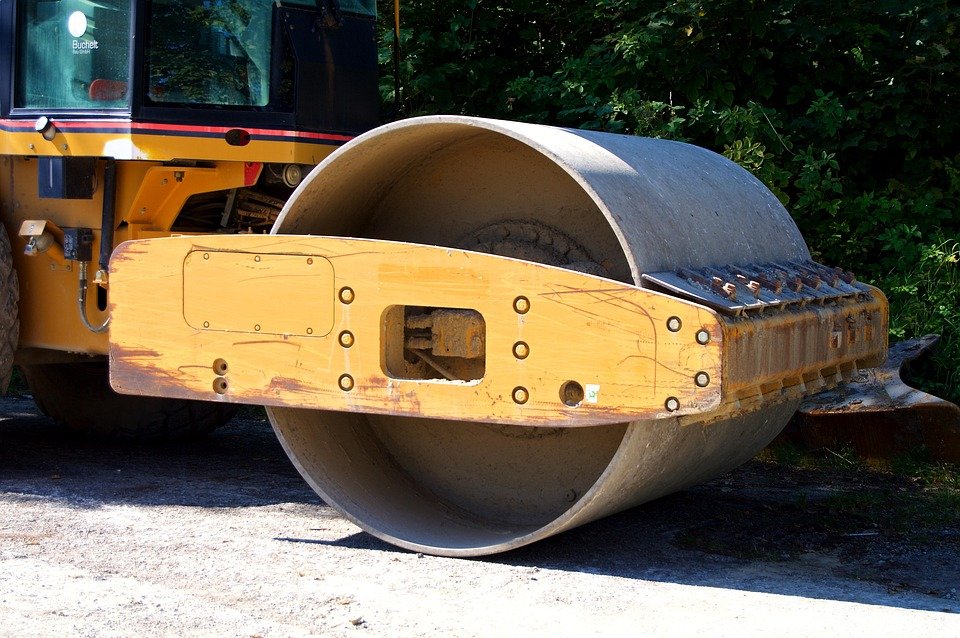Power with precision space: A guide to compact CNC vertical mill
In a dynamic world of modern manufacturing, efficiency, precision and adaptability dominate. For workshops, prototype labs, R&D departments and small to medium-sized businesses (SMEs), space is often premium, and budget constraints require wise investments. enter Compact CNC vertical mill – A powerful solution packages industrial-grade features into a smaller footprint. These machines represent a paradigm shift, which allows exquisite CNC machining to touch on the potentially impractical operation of full-size VMCs. As a major force in advanced manufacturing, Greatlight understands the key role these agile machines play, and we are here to guide you through their world.
What exactly is a compact CNC vertical mill?
Imagine the robust spindle stiffness, precise axis control, and programming versatility of traditional vertical machining centers (VMCs), but narrowed down. Compact CNC vertical plants usually have:
- Reduced footprint: Compared to industrial VMC, the physical size is significantly smaller and is comfortable to fit in a tighter space next to a garage, small shop or other equipment.
- Vertical spindle direction: The cutting tool moves vertically (z-axis), while the workpiece moves horizontally on the XY table below it, perfect for parts like plates, blocks and flat components.
- Integrated CNC control: Complex, repeatable machining operations are allowed through complex G-code operations generated by CAD/CAM software.
- Core processing functions: Perform basic processes such as milling, drilling, digging, boredom and contouring on various materials (metals, plastics, composites).
Why choose a compact CNC vertical mill? Enthusiastic advantages
Deciding to invest in a compact model is more than just saving space; it is a strategic move that offers multiple benefits:
- Space optimization: The most obvious advantage. Unleash valuable store floor areas without sacrificing critical machining features.
- Lower acquisition costs: Generally, it is more affordable than larger industrial companies, greatly reducing barriers to entry into CNC technology.
- Reduce operating costs: Lower power consumption due to smaller motors and components translates into electricity bill savings.
- Enhanced versatility: Although compact, modern machines provide an impressive machining envelope for its size and handling of a wide range of materials, making it ideal for prototypes, small-volume production, tools, fixtures and educational uses.
- Easy to use and learning curve: Compared to browsing complex industrial systems, they are often considered for user-friendly designs and are an excellent entry point for newbies in CNC machining. Many have intuitive software interfaces.
- Agility and flexibility: Quickly set up and reconfigure different jobs, ideal for environments where quick turnarounds or frequent changes to work.
Key features to evaluate when purchasing a compact CNC mill
Not all compact mills are equal. Carefully consider these key factors to ensure you provide the right machine for your needs:
- Table size and processed envelope (X, Y, Z travel): Does the workspace fit your typical part size? Remember to indicate tool length and labor.
- Spindle power and speed (RPM): Determines the cutting function (especially in stronger metals) and finish quality. Higher RPMs are often beneficial for smaller tools and finer finishes. (For example, 6,000 rpm might be standard, while 10,000+ RPMs have more flexibility).
- Spindle taper (e.g., BT30, R8, ISO 30/40): Determine which tool holders you can use. The BT30 is a very common and powerful standard for compact mills with good rigidity.
- Control system: Look for systems with familiar, user-friendly CNC controllers such as FANUC, SIEMENS, HEIDENHAIN, or advanced PCs with easy-to-programmable options, and reliable.
- Building and Rigidity: The structure of cast iron or welded steel frames is critical for vibration damping and machining accuracy, especially when cutting harder materials.
- Shaft drive (ball screws with rack and pinion): Precision ball screws generally offer higher accuracy and repeatability compared to rack and pinion systems.
- Tool changer: Automatic tool changers (ATC – even 6-10 tools) greatly improve productivity by reducing the setup time between operations. Magazines with 8-10 tools are common in this course.
- Coolant system: For effective metal cutting, it is crucial to extend tool life and achieve a good finish. Integrated flood coolant is highly recommended.
- Accuracy and repeatability: Check the manufacturer’s specifications for positioning accuracy and repeatability that are typically measured in microns. ((m)
Why Greatlight is the ideal partner for your compact CNC machining (and more)
Buy your own compact CNC mill while in-house production, working with experts can unlock another capability and efficiency. At Greatlight, our core capability lies in using elites to address the most demanding precision machining challenges Five-axis CNC technology. This allows us to manufacture parts with unique geometry and complex functions that are not possible even in high-quality 3-axis factories. However, we have an in-depth understanding of the important role of compact mills at all stages:
- Prototype power supply: We leverage compact milling (partial or complete process) and our advanced features to quickly and cost-effectively create precisely designed prototypes.
- Small batches and niche production: Need smaller complex parts? We combine the efficiency of advanced processes (often reducing the setup) with the flexibility to handle a variety of materials and finishes.
- Material Nirvana: Greatlight Gregnifiin machines everything from aviation-grade aluminum and titanium to exotic superalloys (Inconel, Hastelloy), stainless steel, engineered plastics (PEEK, DELRIN) and COMPOSITES. We have the processing knowledge and tools to achieve the best results.
- End-to-end excellence: In addition to processing, we are yours One-stop solution. From meticulous post-treatment (burring, polishing) to dedicated surface treatments (anodizing, plating, heat treatment, custom finishes), we manage the entire journey from raw materials to finished components.
- Speed and value: Our advanced technology and optimized processes translate into faster lead times without sacrificing quality. We are committed to providing competitive prices for customized precise parts.
- Experience-driven solutions: We don’t just run machines; we solve complex manufacturing problems. Our expertise ensures that parts are made for the first time, meeting stringent tolerances and performance requirements.
Conclusion: Compact power, expanded through expertise
The compact CNC vertical factory is a game-changer, democratizing access to precise machining capabilities in tight spaces and budget constraints. They are versatile tools for prototyping, small production and professional tasks. Paying attention to core specifications such as core specifications such as size, spindle power, rigidity and control systems is crucial when purchasing new machines.
For projects that require an absolute pinnacle of complexity, accuracy or material performance – or when you need a seamless journey from a CAD model to a fully completed part – working with experts like Greatlight offers unparalleled advantages. Our advanced five-axis CNC machining, in-depth material knowledge and comprehensive post-processing services ensure that your custom precision components are delivered to the highest standards on time and on time and delivered at extraordinary value. Ready to bring your demanding design to life?
Explore custom precise machining with Greathime: Visit us to discover how our expertise can improve your next project. Get the best prices for custom-made parts now!
Frequently Asked Questions about Compact CNC Vertical Mills (FAQs)
Q1: What is the biggest part I can really make on a compact CNC mill?
A1: The limiting factor is the machine Drive on X, Y and Z axes. Check out the manufacturer’s specifications carefully for the maximum size that the table can move. Remember that the part size must fit this envelope and Allows space for labor fixtures (vises, fixtures) and cutting tools themselves. Don’t forget to consider tool length in z-axis depth. Typically, compact mills have parts up to several cubic feet in size.
Q2: Can compact CNC mills handle harder materials such as steel?
A2: Yes, absolutelybut there are warnings. The key factors are:
- Spindle power and torque: Higher horsepower is required for efficient steel removal. Look for steel with 5 hp (3.7 kW) or more.
- Frame stiffness: Heavy vibration damping cast iron or steel frames are essential to maintain accuracy and prevent tremors when hard metals are present.
- tool: Using the appropriate carbide end mill design for steel and correct cutting parameters (speed, feed, cutting depth) is essential.
- Coolant: Effective flood coolant must manage heat and extend tool life.
They can efficiently machine aluminum, brass, plastic, mild steel and some tool steel, but compared to a large number of VMC, they are with the hardest alloy or very heavy roughness.
Q3: Is automatic shifter (ATC) really necessary?
A3: Productivity is strongly recommended. When you able ATC eliminates the need for operators to manually change tools between different machining operations (e.g., switching from drill bits to Tap or end mills of different sizes). This saves a lot of time, reduces the chance of setting errors, and allows completely unattended processing after the setup is completed. For anything other than simple, monopod jobs, 6-10 tool ATC is a game-changer.
Question 4: How difficult is it to learn a compact CNC mill?
A4: The learning curve exists, but is becoming easier to manage. Factors that affect difficulty:
- The complexity of the controller: Modern PC-based controllers with graphical interfaces are often easier than proprietary industrial panels.
- Previous experience: Familiar with manual milling or CAM software can be of great help.
- Training and resources: Good machine documentation, online community and training videos are invaluable.
- CAM software: Learning CAM (Computer Aided Manufacturing) software to generate G code is usually the steepest part. Many compact factories provide simplified dialogue programming options for basic tasks. It requires specialized learning, but it is possible for motivated people with technical talents.
Question 5: How does outsourcing compare to buying my own compact mill?
A5: Each has obvious advantages:
- Purchase your own:
- Best for: Frequent small work, internal prototypes, highly specific internal requirements, complete control over timetables.
- Require: Capital investment, space, operator training, tools/fixed costs, maintenance, CAM software, material procurement.
- Outsourcing to Outstanding:
- Best for: Complex geometry (especially requiring 5 axes), very tight tolerances, professional/hard materials, larger batch sizes (> 10+ parts are usually more cost-effective), parts that need to be finished, lack of space/expert knowledge/infrastructure.
- advantage: Access to excellent technology (such as our 5-axis system), deep material expertise, no machine/maintenance overhead, guaranteed results, faster production meter, comprehensive finishing service.
Greglight complements compact mill owners. You can handle simpler, straightforward tasks internally and work with us to get highly complex, demanding or higher numbers of components.










































